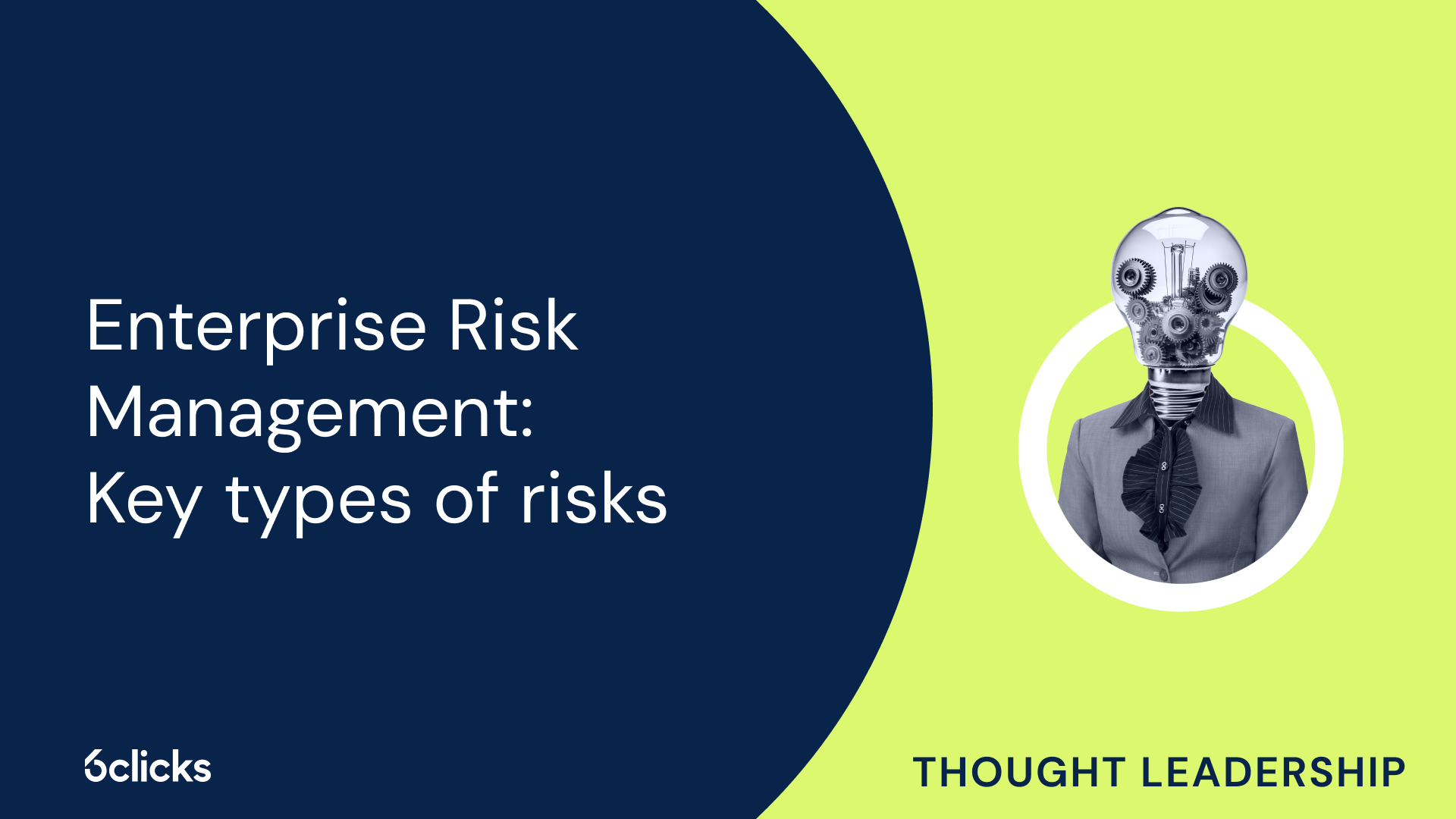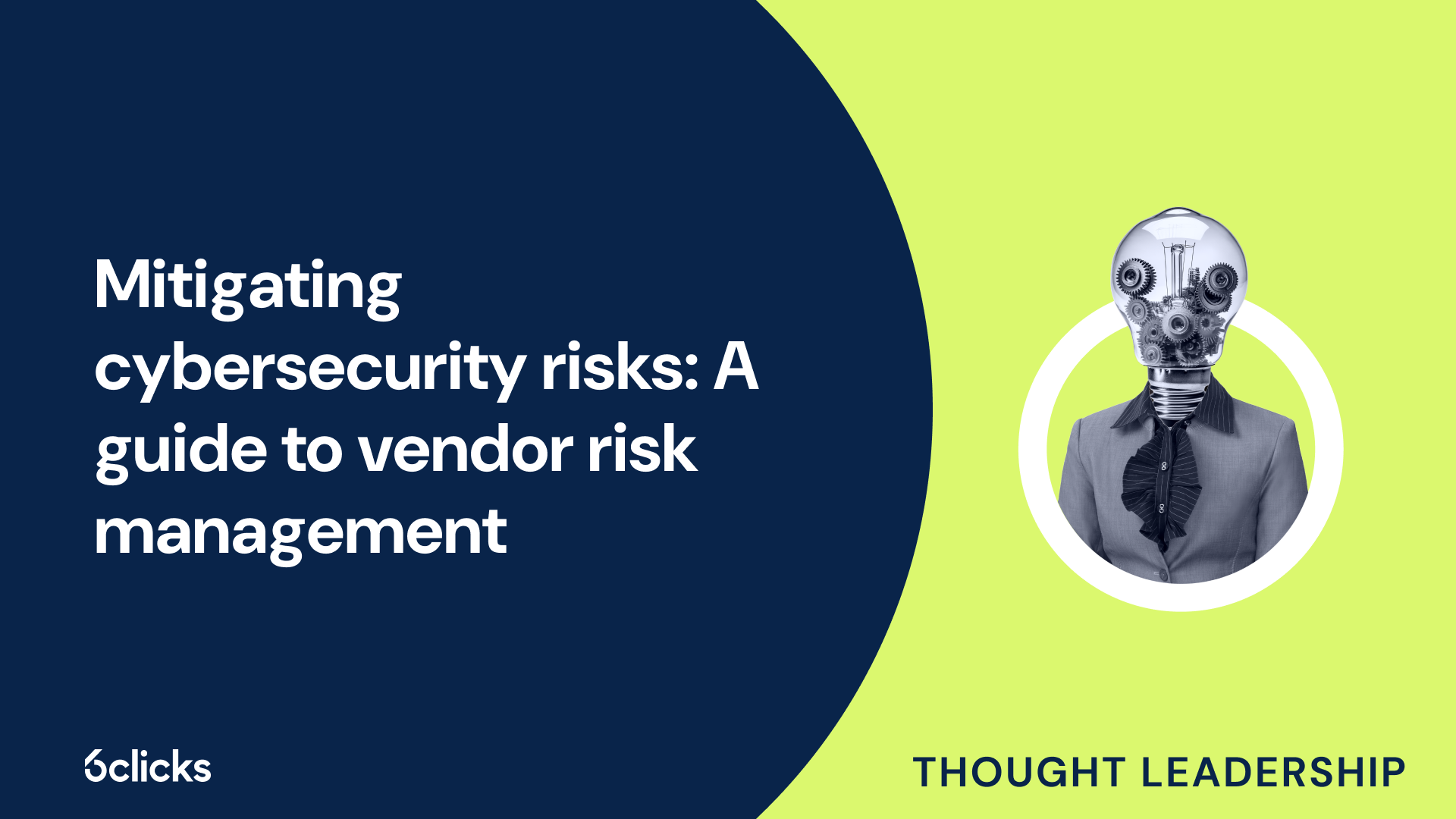What does ISO 27001 mean?
-1.png?width=314&height=391&name=Group%20193%20(1)-1.png)
What does ISO 27001 mean?
What is ISO 27001?
ISO 27001 is an international standard that sets out the criteria for establishing, implementing, maintaining, and continually improving an Information Security Management System (ISMS). The standard provides a systematic approach to managing sensitive company information, ensuring its confidentiality, integrity, and availability. ISO 27001 helps organizations identify and manage information security risks, prevent security breaches, and comply with legal and regulatory requirements. It covers various aspects of information security, including asset management, risk assessment, access control, human resource security, and business continuity management. By implementing ISO 27001, organizations can demonstrate their commitment to protecting sensitive information, maintaining the trust of customers and stakeholders, and improving overall security posture. Achieving ISO 27001 certification involves undergoing a comprehensive auditing process by a certification body to verify compliance with the standard's requirements. Overall, ISO 27001 provides a holistic framework for organizations to establish and maintain effective information security management systems, ensuring the confidentiality, integrity, and availability of their information assets.
Benefits of ISO 27001 certification
ISO 27001 certification is a valuable asset for organizations seeking to build trust and assurance in their information security management systems. This certification demonstrates that an organization has followed internationally recognized standards and has undergone external audits to ensure the effectiveness of their security controls and management systems.
The benefits of ISO 27001 certification are numerous. Firstly, it gives customers and stakeholders the certainty that their sensitive information is being handled securely and that the organization takes data protection seriously. This assurance can be a significant factor in attracting and retaining customers, as well as cultivating long-term relationships with stakeholders.
Secondly, ISO 27001 certification opens doors to new business opportunities and markets. Many clients, especially in sectors dealing with high-risk information, require suppliers to hold this certification. Achieving ISO 27001 certification enhances an organization's credibility and positions it as a trusted partner for potential clients.
Furthermore, this certification safeguards the organization's brand and reputation. With an increasing number of cybersecurity incidents and data breaches, customers are becoming more cautious about whom they trust with their information. ISO 27001 certification signals to customers that their data is in safe hands, giving the organization a competitive edge and protecting its reputation.
Lastly, the certification process can drive continual improvement within the organization. By complying with ISO 27001 standards, an organization fine-tunes its security processes and identifies areas for improvement. This can lead to enhanced operational efficiency, reduced security risks, and increased customer satisfaction.
Overview of the standard
ISO 27001 is an international standard for information security management systems (ISMS). It provides a framework that organizations can use to establish, implement, maintain, and continually improve their information security controls and processes. The standard sets out requirements and guidelines for managing information security risks and protecting sensitive information. ISO 27001 helps organizations identify and address security threats, assess risks, and implement security controls to mitigate those risks. It also promotes the adoption of a risk-based approach to information security management, ensuring that organizations take a systematic and proactive approach to protecting their information assets. By implementing ISO 27001, organizations can demonstrate their commitment to information security and provide assurance to customers and stakeholders that adequate security measures are in place.
Scope of the standard
The ISO 27001 standard is a globally recognized framework for implementing an Information Security Management System (ISMS). It is designed to help organizations establish, implement, maintain, and continuously improve their information security practices. The standard is divided into two parts with specific purposes.
The first part of the ISO 27001 standard consists of clauses 0 to 3. These clauses serve as an introduction to the standard, providing important context and information. Clause 0 provides a brief overview of the standard, including its purpose and scope. Clause 1 lays out the normative references, which are the international standards that the ISO 27001 standard is based on. Clause 2 provides the necessary definitions and terms used throughout the standard. Finally, clause 3 outlines the terms and definitions specific to the ISO 27001 standard.
The second part of the ISO 27001 standard includes clauses 4 to 10, which outline the requirements that organizations must meet to achieve compliance. These requirements cover various aspects of an organization's information security management system, such as risk assessments, security controls, internal audits, and continual improvement processes. Compliance with these requirements demonstrates an organization's commitment to protecting their information assets and managing security risks effectively.
Annex A - control objectives and controls
Annex A of ISO 27001 is a fundamental part of the standard and provides a comprehensive set of control objectives and controls for organizations to implement in their information security management systems (ISMS). These controls are designed to address specific security risks and protect the confidentiality, integrity, and availability of information assets.
ISO 27001:2022, the latest version of the standard, introduces new controls in Annex A to address emerging security threats and challenges. These controls supplement the existing ones and enhance the overall security framework.
Annex A is divided into 14 control objectives, grouped into four key categories:
- Information Security Policies and Organization: This group outlines controls related to establishing and maintaining an organization's information security policies, roles, responsibilities, and processes to ensure effective governance.
- Asset Management: Controls in this group focus on managing information assets, including their identification, classification, ownership, and protection throughout their lifecycle.
- Access Control: These controls address the establishment of access controls to prevent unauthorized access to information assets, ensuring that only authorized individuals can access and modify them.
- Cryptography, Physical and Environmental Security: This group covers controls related to encryption, physical security measures, and protection against environmental threats, such as fire or water damage.
ISO 27001:2022 introduces new controls in areas such as cloud computing and supply chain security to reflect the evolving landscape of information security threats.
Organizations aiming for ISO 27001 certification must assess their compliance with the control objectives and implement the corresponding controls outlined in Annex A, in addition to meeting other requirements of the standard. This systematic and comprehensive approach helps organizations build a robust information security management system and protect their valuable assets from various security risks.
Security management system requirements
Security management system requirements are a comprehensive set of policies and procedures that ensure, manage, control, and continuously improve information security within an organization. These requirements are outlined in ISO/IEC 27001, the internationally recognized standard for information security management systems (ISMS).
The security management system addresses the three key concerns of information security, known as the CIA triad: confidentiality, integrity, and availability. It aims to protect sensitive data from unauthorized access (confidentiality), ensure the accuracy and completeness of information (integrity), and ensure that information is accessible to authorized users when needed (availability).
To achieve these objectives, the security management system follows a structured approach that includes:
- Identifying stakeholders and risks: This involves identifying the parties with an interest in information security, understanding their requirements and expectations, and assessing the risks the organization faces in relation to information security.
- Defining security controls and objectives: Based on the identified risks, the organization defines appropriate controls to mitigate those risks. These controls can include technical measures, administrative procedures, and physical safeguards. Clear security objectives are established to guide the implementation and assessment of these controls.
- Implementing and measuring controls: The identified security controls are implemented across the organization. Regular monitoring and measurement activities are conducted to determine the effectiveness of these controls in meeting the defined security objectives.
- Continuously improving: The security management system emphasizes a culture of continual improvement. By periodically reviewing and evaluating the effectiveness of the controls and making necessary adjustments, organizations can enhance their information security posture over time.
Requirements for implementing ISO 27001
Requirements for implementing ISO 27001 involve several key steps that organizations must follow to establish an effective information security management system. These requirements include identifying stakeholders and risks, defining security controls and objectives, implementing and measuring controls, and continuously improving the security management system. By following these requirements, organizations can effectively protect sensitive data, ensure the accuracy and completeness of information, and provide authorized access when needed. This systematic approach helps organizations address the three key concerns of information security: confidentiality, integrity, and availability. By adhering to the requirements of ISO 27001, organizations can enhance their information security posture, comply with legal and regulatory requirements, and mitigate security risks and threats.
Establishing a security policy
Establishing a security policy is of utmost importance in promoting an information security culture within an organization. A security policy serves as a guide, providing a framework for protecting confidential information and ensuring the integrity and availability of important assets.
Confidentiality, integrity, and availability are the key principles that should be addressed in a security policy. Confidentiality ensures that sensitive information is protected and accessible only to authorized individuals. It involves implementing measures like access controls and encryption to safeguard data from unauthorized disclosure. Integrity ensures the accuracy and completeness of information and prevents unauthorized alteration. Availability ensures that information and resources are accessible to authorized individuals when needed and protected against disruptions.
A comprehensive security policy outlines the responsibilities and expectations of employees, identifies potential risks and threats, and outlines procedures for incident response and recovery. It also establishes guidelines for the use of technology and communication tools and ensures compliance with legal and regulatory requirements.
By establishing a security policy, organizations aim to create a culture where information security is ingrained in every aspect of operations. It helps raise awareness among employees, encourages responsible behavior, and supports the development of secure processes and systems. Ultimately, a robust security policy promotes the protection of sensitive information, safeguards against security breaches, and ensures business continuity.
Risk assessments and risk treatment plans
Risk assessments and risk treatment plans are integral components of the ISO 27001:2022 standard for information security management systems. The process begins with identifying and evaluating the risks faced by an organization in relation to its information assets. This involves considering both internal and external threats, assessing the likelihood of their occurrence, and determining the potential consequences.
Once the risks have been identified and evaluated, organizations can develop risk treatment plans. The updated version of ISO 27001 places a greater emphasis on providing specific options for risk treatment. These options include modification, retention, avoidance, sharing, enhancement, and exploitation. Each option offers a different approach to managing and mitigating risks.
In developing risk treatment plans, organizations must consider both the potential negative consequences of risks and the potential rewards of opportunities. This ensures a balanced approach to risk management, taking into account the potential impact on business operations and objectives.
One notable advantage of a risk-based system, like ISO 27001, is its flexibility compared to rule-based systems like the Payment Card Industry Data Security Standard (PCI DSS). A risk-based system allows organizations to adopt controls and measures that are tailored to their specific needs and circumstances. This flexibility ensures that resources are allocated effectively and efficiently, mitigating risks in a way that aligns with the organization's strategic goals.
Access controls and communications security
Access controls and communications security are critical components of ISO 27001, the international standard for information security management systems. Access controls ensure that only authorized individuals have the appropriate permissions to access sensitive information assets. By implementing access controls, organizations can protect their valuable data and prevent unauthorized access, modification, or destruction.
In addition to access controls, communications security plays a crucial role in safeguarding the confidentiality, integrity, and availability of data during transmission. This involves implementing protective measures such as encryption, firewalls, and secure protocols to prevent unauthorized interception, tampering, or disclosure of information.
Access controls and communications security work hand in hand to create a robust and reliable security framework. While access controls protect information at rest, communications security ensures its protection during transmission, both within an organization's internal network and across external networks.
By implementing strong access controls and communications security measures, organizations can mitigate the risk of unauthorized access, data breaches, and other security incidents. These measures not only protect the organization's sensitive information assets but also ensure the trust and confidence of customers, partners, and stakeholders in the security of their data.
Human resource security
Human resource security is a critical aspect of ISO 27001:2022, the international standard for information security management systems. It focuses on establishing controls and guidelines to ensure that employees and contractors are aware of and adhere to information security policies and procedures.
One crucial control is personnel screening, which involves conducting background checks and verifying the credibility of individuals before granting them access to sensitive information or critical systems. This helps to mitigate the risk of insider threats and unauthorized access to confidential data.
Organizations also need to establish clear terms and conditions of employment that outline employees' responsibilities regarding information security. This includes clauses related to data protection, confidentiality agreements, and disciplinary measures for violating information security policies.
Furthermore, implementing robust information security awareness, education, and training programs is essential to ensure that employees are aware of the potential risks and best practices to protect sensitive information. Regular training sessions help promote a strong security culture within the organization.
Disciplinary processes should also be in place to address any violations or breaches of information security policies. This ensures that consequences are enforced consistently, discouraging non-compliance with established security guidelines.
Additionally, cryptographic controls should be implemented to protect sensitive information from unauthorized access or modification during transmission or storage. This includes encryption techniques to safeguard data confidentiality and integrity.
By implementing these controls and guidelines, organizations can benefit from improved protection of confidential information, prevention of unauthorized access, and proper handling of information security events. This not only strengthens the organization's overall security posture but also enhances its reputation and instills trust among stakeholders.
Physical and environmental security
Physical and environmental security are critical components of ISO 27001:2022, as they help protect organizations' assets and prevent unauthorized access to sensitive information.
To ensure asset protection, organizations should establish and implement appropriate measures to safeguard their physical assets. This includes securing facilities with access controls, such as badge systems, locks, and surveillance systems. Access to sensitive areas should be restricted only to authorized personnel.
Preventing unauthorized access is paramount in maintaining information security. Organizations should employ physical barriers, such as fences and gates, to protect their premises. Additionally, the use of alarms and motion sensors can alert security personnel to potential breaches.
ISO 27001:2022 includes specific control objectives and controls related to physical and environmental security in Annex A. Control objectives include defining access control policies and procedures, ensuring secure disposal of assets, managing equipment security, and securing offices, rooms, and facilities.
To address these objectives, organizations must implement measures such as conducting regular risk assessments to identify vulnerabilities, deploying appropriate security measures to prevent unauthorized access, and monitoring and reviewing security controls to ensure their effectiveness.
By focusing on physical and environmental security measures, organizations can better protect their assets from unauthorized access, reduce the risk of security breaches, and strengthen their overall information security posture.
Asset management
Asset management is a crucial aspect of information security, and ISO 27001:2022 provides specific requirements and procedures to ensure effective asset management.
One key requirement is the development of a formal asset management policy and associated procedures. This policy should define how organizations identify and classify their assets, determine their value and importance, and establish appropriate controls to protect them. These controls can include physical security measures, access controls, and encryption.
ISO 27001:2022 also emphasizes the importance of taking a risk-based approach to asset management. This involves segmenting assets based on their value and the potential risks associated with their compromise. By categorizing assets, organizations can allocate resources and implement appropriate security measures based on the identified risks.
Educating and training staff, including employees and third-party suppliers, on security policies and procedures is another critical aspect of asset management. Organizations need to ensure that all individuals who have access to assets understand their responsibilities in protecting them. This can involve providing security awareness training, regular reminders, and ongoing monitoring of compliance.
Furthermore, ISO 27001:2022 highlights the need to maintain records of asset management activities. These records should demonstrate how assets are identified, classified, and protected, as well as any changes or incidents related to the assets. By maintaining accurate records, organizations can track asset-related activities and ensure compliance with internal policies and regulatory requirements.
Incident management
Incident management plays a crucial role in the context of ISO 27001 certification, as it ensures that organizations have effective processes in place to handle and respond to security incidents. An incident refers to any event that potentially compromises the confidentiality, integrity, or availability of information assets.
Logging and investigating security incidents is a fundamental part of incident management. Organizations must have clear policies and procedures in place to document and track incidents as they occur. This includes recording relevant details such as the date, time, nature of the incident, individuals involved, and any actions taken to mitigate the impact.
Thorough investigation of security incidents is essential to identify the root cause, assess the impact, and develop appropriate remediation plans. This involves gathering evidence, analyzing data, and engaging relevant stakeholders to understand the incident's scope and implications.
An incident management policy should cover several key aspects. Firstly, it should define what constitutes a security incident and establish clear reporting mechanisms. It should outline the roles and responsibilities of personnel involved in incident response, as well as the escalation procedures for severe incidents. The policy should also address communication protocols, both within the organization and with external parties such as clients, regulators, or law enforcement agencies.
Business continuity planning
Business continuity planning is a crucial aspect of ISO 27001 certification as it ensures the ongoing availability of critical operations and services in the face of disruptive incidents. ISO 27001, an international standard for information security management systems, recognizes the importance of having a robust business continuity plan in place.
According to ISO 27001, organizations must develop and implement a business continuity plan to address the potential impacts of incidents and disruptions. This plan should identify critical operations and services and establish strategies and procedures to ensure their availability during and after a disruptive event.
Key elements of a business continuity plan, as outlined by ISO 27001, include risk assessments and risk treatment plans. Organizations need to assess the potential risks to critical operations and services, considering both internal and external threats. Based on these assessments, they must then develop risk treatment plans to mitigate, transfer, or accept the identified risks.
By incorporating business continuity planning into the ISO 27001 framework, organizations can proactively address potential disruptions to their operations and services. This helps minimize the impact of incidents on the organization, its clients, and stakeholders. It also demonstrates an organization's commitment to maintaining the availability of critical operations and services, thus enhancing its overall security posture and resilience.







